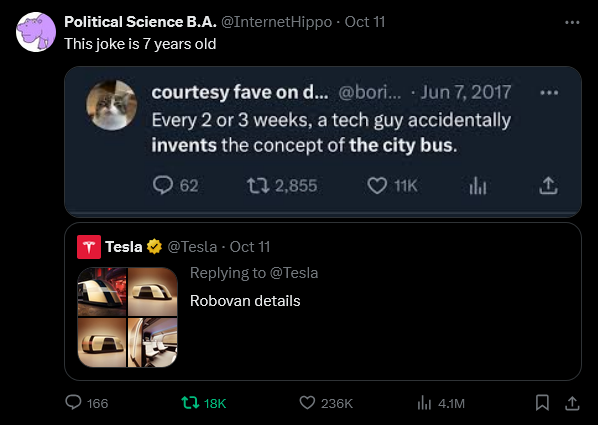this post was submitted on 13 Oct 2024
1171 points (98.8% liked)
Microblog Memes
5771 readers
2109 users here now
A place to share screenshots of Microblog posts, whether from Mastodon, tumblr, ~~Twitter~~ X, KBin, Threads or elsewhere.
Created as an evolution of White People Twitter and other tweet-capture subreddits.
Rules:
- Please put at least one word relevant to the post in the post title.
- Be nice.
- No advertising, brand promotion or guerilla marketing.
- Posters are encouraged to link to the toot or tweet etc in the description of posts.
Related communities:
founded 1 year ago
MODERATORS
you are viewing a single comment's thread
view the rest of the comments
view the rest of the comments

Most of those can addressed by busses too actually.
Bus Rapid Transit (BRT) or any bus line can have less stop for this reason. To expand on BRT routes, they can be dedicated lanes for busses, with right of way. They can be specific only for busses, and cars not allowed to use it ever or also mixed usage where certain rush hours are for bus use only but outside those hours can be used by other vehicles.
This can also be done with BRT routes.
BRT as well.
Busses can absolutely support this. Paris has more open busses to allow more people standing or people with disabilities.
With dedicated BRT lanes, I believe that can also be done considering there's only bus stops that need to be slowed down on.
I know technically electric busses are possible, but I'm not certain how feasible this is.
My understanding is that BRT routes are cheaper and faster to setup than trains, and can be upgraded to trains. I'm not saying BRT is better than light or heavy rail, but that should be a more common path for mass transit that is not utilized in the US.
we can help solve this by using plastic breaks on trains
finally someone who provides a solution to the problem!
most politicians still don't know what the problem is.